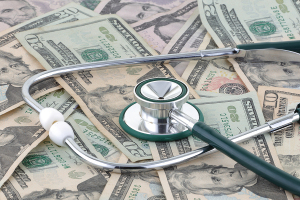by
Robin Lasky, Contributing Reporter | March 23, 2021
Only 22% of hospitals were found to be compliant with a new price transparency rule that went into effect on January 1st of this year.
As anyone who has ever tried to price-comparison shop for medical care can attest, medical billing information can be extremely difficult to access and otherwise frustratingly opaque. It is not uncommon for a consumer to be entirely rebuffed by hospital staff when attempting to obtain advanced pricing quotes for contemplated procedures, and when such information can be obtained, it is usually only after considerable time and persistent effort.
In order to make this arena more equitable for consumers and in the hope of curbing the rising cost of healthcare, Centers for Medicaid and Medicare Services (CMS) issued the new rule in November of 2019 expanding on the categories of price information that hospitals were already required to publicly disclose under the ACA.
“Price transparency puts patients in control and supports competition on the basis of cost and quality, which can rein in the high cost of care," Seema Verma, CMS Administrator, said in a statement about the new regulation last October. "CMS’ action represents perhaps the most consequential healthcare reform in the last several decades.”
Health Affairs, a peer reviewed journal with a focus on policy and analysis, conducted a review of the publicly available pricing information from a sample of 100 hospitals in order to analyze their level of compliance with the new regulatory requirements. The authors of the study found that, while interpreting the results most generously in favor of the hospitals,
only 22 of them were in full compliance, while 65 were determined to be unambiguously noncompliant.
“We are troubled by the finding that 65 of the nation’s 100 largest hospitals are clearly noncompliant with this regulation. These hospitals are industry leaders and may be setting the industrywide standard for (non)compliance; moreover, our assessment strategy was purposefully conservative, and our estimate of 65 percent noncompliance is almost certainly an underestimate,” the authors of the Health Affairs study concluded.
In a departure from
CMS’s prior guidance, which only required the gross rates reflected in the hospital’s chargemaster to be made publicly available,
the new rule requires hospitals to additionally publish cash discount rates, negotiated rates specific to each third-party payer, e.g., insurers, and the minimum and maximum rates for each item or service that a hospital has negotiated with third-party payers more generally.

Steven Bolfing
Interesting
March 25, 2021 02:36
The phrase "unambiguously noncompliant" seems to be a euphemistic way of saying "blatantly noncompliant." The argument that pricing can lead people to delay needed procedures is weak at best. After being hit with several thousand dollars of totally unexpected bills (procedure in 2019), I am now far more leery of getting any procedure unless I have a realistic idea of my cost up front. I'm sure I'm not alone.
The key concept in all of this is that billing practices are a scam. However, part of the reason is that doctors, hospitals, etc. cannot easily get reasonable and timely compensation for the work they perform. We cannot solve all the problems at once - start with showing what real costs are, and then work on reasonable compensation for service.
to rate and post a comment